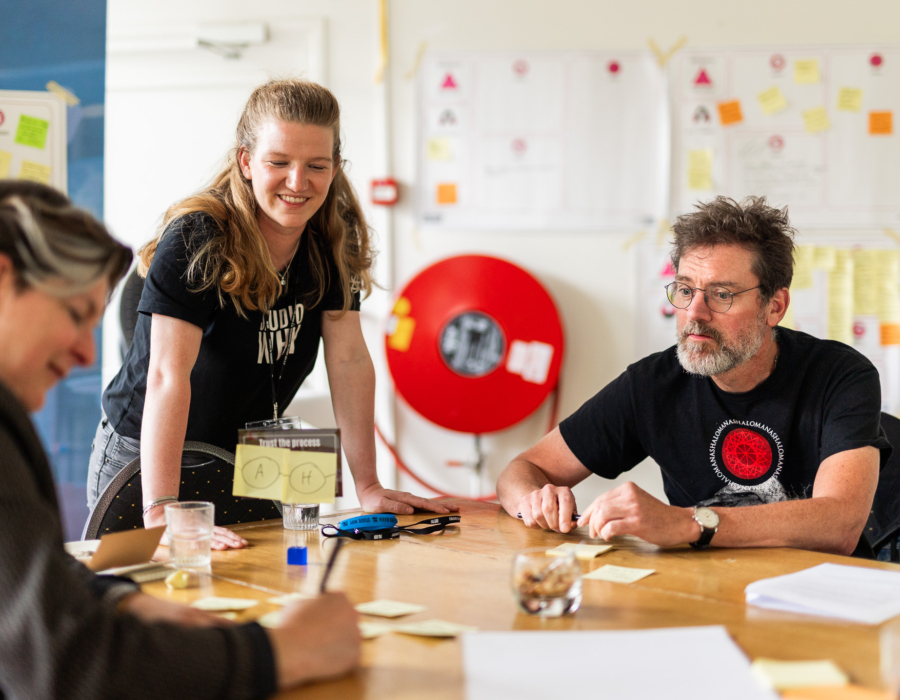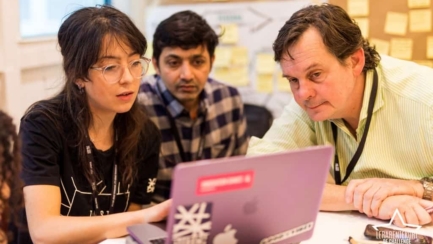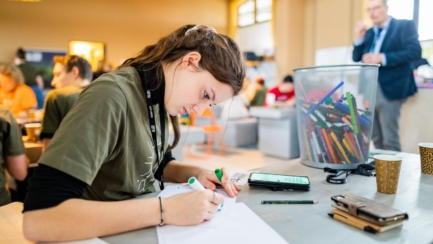Inhoudsopgave
Design as a way of solving problems
In this article we share the History of Design Thinking.
In the 1950s to 1970s, the idea emerged that design is more than just making something beautiful. Scientists such as Herbert Simon saw design as a way to solve problems step by step. They looked at what the problem was exactly, what the possible solutions were, and how you could test them. This logical and goal-oriented way of working formed the basis of Design Thinking, although it was not yet called that at the time.
Think like a designer
The next phase in the History of Design Thinking was in the 1980s and 1990s, when researchers began to look at how designers think and work. Nigel Cross discovered that designers often view problems differently than engineers or managers, for example. They combine creative thinking with practical steps. They try things out, learn from what doesn’t work, and quickly improve on it. This way of thinking was seen as valuable for many more professions, not just designers.
IDEO and human-centered design
The next phase in the History of Design Thinking was in the 1990s, when the American design agency IDEO became world famous. They worked on smart products such as the first computer mouse for Apple. IDEO was known for its creative approach, always starting with the people for whom they were creating something. Founder David Kelley called this ‘Human-Centered Design’. This approach revolves around listening carefully, observing and understanding what users really need. Not what they say they want, but what they encounter in practice.
The five steps of Stanford
In 2004, David Kelley founded the d.school at Stanford University. There, Design Thinking became a teaching method with five fixed steps:
- Empathize (understanding the user),
- Define (formulate the problem clearly),
- Ideate (come up with ideas),
- Prototype (making ideas tangible) and
- Test (testing and improvement).
This clear approach meant that even people without a background in design, such as managers, teachers, or civil servants, could get started with it.
Success in businesses and government agencies
From 2000 onwards, more and more organizations started using Design Thinking. Large companies such as IBM and Philips used it to develop customer-focused innovations. Governments, schools, and healthcare institutions also started working with it. They wanted to better align themselves with what people actually need in practice. Think of citizens, patients, or students. Design Thinking helped to increase collaboration, reduce top-down thinking, and truly test solutions with end users.
Design Thinking for major changes
In recent years, Design Thinking has been increasingly used to address major social issues such as sustainability, healthcare, poverty, and climate change. This approach is not only about new products or services, but also about changing systems and collaboration. Organizations use Design Thinking in combination with other approaches, such as the Inner Development Goals (IDGs), to help people within the organization grow in personal leadership, collaboration, and adaptability. In this way, change is not imposed from above, but built from within.



